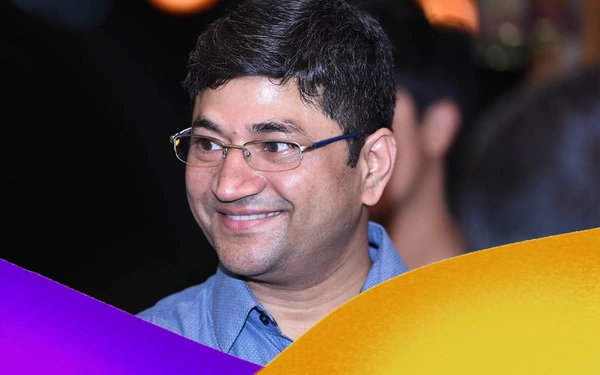Glad to meet you!
As I stand on the cusp of completing 2 wonderful years at STL, I can’t help but wonder at the quality of experience I have had here. In case you’re still wondering, I am Rishi Nandwana I and I am a part of Access Solutions at STL. I lead the company’s radio network and wireless portfolio.
My work drives me and my aspirations. I have always been driven by the constant urge to build products from scratch. To me, it is like a work of art.
I build wireless communications products from scratch
At STL, I develop products for our wireless portfolio. It begins with an outside-in approach, understanding the beat of the market and drivers of business needs, and collecting specific customer requirements. Then comes the inside-out approach to develop the product through the stages of roadmap, architecture, specifications, research and development, testing and finally, acceptance. Sound pretty mundane? Well, it’s NOT! The challenge of building something that understands the needs of the market and the customer cannot be addressed solely by a coded solution. This is where I come in.
A case in point is the multiband 5G radio a.k.a ORAN radio. Till date, this is certainly one of my top 3 most complex assignments. Initially, we were lucky to score an opportunity in the form of a customer requirement for a novel solution for their 5G roadmap. This was a watershed moment in the company’s 5G solutions journey. In fact, I was the sole proponent of STL’s foray into the hardware equipment business. Backing hypotheses with hours upon hours of research, I managed to convince my superiors to invest in this vision of creating our own hardware product.
Next, I had to actually develop something for which precedent was yet to be set. There was no reference product or baseline architecture. I felt as if it was a make-or-break moment in my life – one that could lead me towards proving my worth in the realm of technology. I found my answers again in research. By carefully analysing the dynamics of the 5G market along with the startup ecosystem potential of India, I was able to form a core team of STLers and ecosystem partners who would co-create products and solutions for every need of the 5G market. This became my extended brain and I, theirs.
Another major hurdle was the absence of any standardization in ORAN. Given the ever-changing customer requirements, it was extremely challenging to develop an apt platform-centric solution. After considerable research and experimentation at STL’s Centre for Smarter Networks (CSN), we selected FPGA-based architecture. FPGA is a software-defined radio architecture and it allows networks to leverage the potential of disaggregation, virtualization and open source programmability.
A story of people, technology and collaboration
I am fortunate to work with an organization that understands technology, values merit and rewards people with it. . I mentioned the FPGA architecture based solution earlier. It would be improper if I didn’t dedicate the results to a couple of other key members of my team – Nitesh Kumar, Rajesh Gangadhar and Dr. Badri Gomatam. Dr. Badri is widely respected for his contributions to the silicon semiconductor industry. With him, I never had to be concerned about running simulations as he was all too pleased to offer his personal computer as our MATLAB-based simulator. Together between Nitesh, Badri, Rajesh and myself, we considered all possible customer use cases and crafted our solution accordingly. We were all like “Avengers” working towards the common goal of building a fully relevant multiband 5G radio product.
This was also my personal journey of courage and great inspiration. There was very little to start with but as we moved forward, learnings were plenty. This project brought each member of the team closer, even at the time when the whole world was under a strict pandemic-induced lockdown. I would like to conclude here with the following “Hum yadi nirbhay honge to sher ko bhi jeet paal sakte hai”















